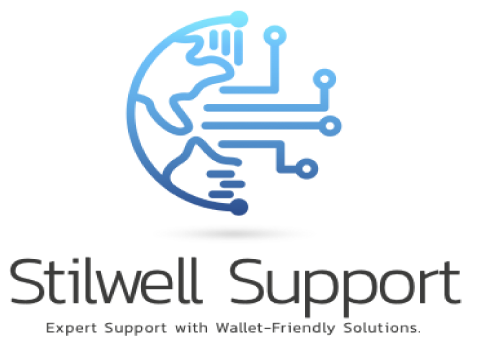Over time, technology has become an imperative component for enhancing efficiency in small businesses. In this guide, you’ll discover affordable tech gifts that can streamline your operations and boost productivity. From tools that simplify communication to software that enhances task management, these innovative solutions will empower you to optimize your business processes while staying within budget.
Key Takeaways:
- Affordable tech solutions can streamline business operations and enhance productivity.
- Investing in tools like project management software can improve team collaboration and efficiency.
- Smart gadgets, such as wireless chargers and portable scanners, can save time and reduce clutter in small workspaces.
Types of Affordable Tech for Small Businesses
You can leverage various types of affordable tech to enhance your small business operations. These solutions can address different needs, including project management, communication, and data storage. Specific tools can not only save you money but also streamline processes and improve efficiency.
- Project Management Software
- Cloud Storage Services
- Virtual Communication Tools
- Accounting Software
- Customer Relationship Management (CRM) Systems
Any combination of these technologies can help simplify your daily tasks and foster team collaboration.
| Project Management Software | Trello, Asana, ClickUp |
| Cloud Storage Services | Google Drive, Dropbox, OneDrive |
| Virtual Communication Tools | Zoom, Slack, Microsoft Teams |
| Accounting Software | QuickBooks, FreshBooks, Wave |
| Customer Relationship Management | HubSpot, Zoho, Salesforce |
Essential Software Solutions
Essential software solutions can transform how you manage day-to-day operations. Project management tools help keep tasks organized, while accounting software simplifies financial record-keeping. Cloud storage ensures that your data is securely accessible from anywhere, while CRM systems enhance customer interactions and sales tracking. These affordable software options equip you with powerful capabilities that can lead to more informed decisions and greater efficiency.
Cost-Effective Hardware Options
Cost-effective hardware options can significantly enhance your operational efficiency without putting a strain on your budget. Laptops, printers, and point-of-sale systems can all be obtained at various price points suited to small businesses. Investing in refurbished or entry-level devices can also reduce costs while still providing the necessary capabilities for daily operations.
When considering hardware, pay attention to factors like durability and scalability, as these will impact your long-term investment. For instance, opting for a multi-functional printer can consolidate several tasks into one device, saving both space and money. Additionally, consider ergonomic setups, as they enhance productivity while promoting employee well-being. Any hardware that streamlines your operations will contribute positively to your bottom line.
Tips for Choosing the Right Tech
Selecting the right tech for your small business can significantly impact efficiency and productivity. Consider these tips to ensure you make informed decisions:
- Evaluate your budget.
- Research available options thoroughly.
- Read user reviews and testimonials.
- Seek tech that integrates seamlessly with existing systems.
- Trial software where possible to evaluate its fit.
This thoughtful approach helps you find solutions that truly benefit your operations.
Assessing Your Business Needs
Before investing in new tech, assess your specific business needs. Identify the challenges your operations face, whether it’s time management issues, communication barriers, or workflow inefficiencies. Gathering input from your team can provide insights into what tools would be most beneficial. Create a list of must-have features and functionalities that align with your goals, helping you to narrow your options effectively.
Prioritizing User-Friendly Tools
User-friendly tools are imperative for smooth integration and adoption among your team. When identifying new technology, prioritize interfaces that are intuitive and easy to navigate. A system that minimizes the learning curve will encourage your staff to embrace the tool quickly, enhancing overall productivity.
Statistics show that 70% of employees prefer using software with a straightforward interface that reduces training time. By prioritizing user-friendly options, you not only empower your team to utilize the tech effectively but also foster a culture of innovation where new tools are welcomed. Incorporating simple yet powerful solutions will facilitate smoother transitions and significantly improve operational efficiency. This choice will ultimately lead to better customer satisfaction as your team can focus more on their core responsibilities.
Step-by-Step Guide to Implementing Tech
| Step | Details |
| 1. Researching Products | Identify tech tools that meet your operational needs and budget. Read reviews and compare features. |
| 2. Installation and Training | Set up the selected tools and train your team for smooth integration into daily operations. |
Researching Products
Start by defining your specific needs and desired outcomes from the technology. Utilize platforms like G2 or Capterra to compare similar tools based on user reviews and ratings. Pay attention to pricing tiers and trial options, focusing on those that offer flexibility during the decision-making process to ensure that you choose a product that aligns well with your business goals.
Installation and Training
Once you’ve selected the appropriate tech, plan for its installation and team training. Ensure that the installation process is smooth, and consider designating a tech-savvy employee to lead the setup. Following installation, conduct formal training sessions to familiarize your staff with the new system, thereby minimizing resistance and enhancing user adoption rates.
Factors to Consider Before Purchase
When evaluating affordable tech solutions for your small business, several factors should guide your decision-making process. Consider the specific needs of your operations, compatibility with existing systems, ease of use, and customer support. You might also want to assess the long-term value and potential return on investment. Evaluating these aspects will help ensure that you select the right tools that genuinely enhance efficiency and productivity.
- Specific operational needs
- Compatibility with existing tools
- Ease of use for your team
- Quality of customer support
- Long-term value and ROI
Recognizing these factors can help you make informed choices that drive your business forward.
Budget Constraints
Your budget plays a significant role in your purchasing decisions. Establish a clear financial limit before exploring potential tech solutions. Keep in mind that while some tools may require a higher initial investment, they can lead to savings and increased productivity over time. Striking a balance between affordability and functionality is key to maximizing your resources.
Scalability and Future Growth
As your business evolves, the tech solutions you choose should be able to adapt. Scalability is imperative for ensuring that your tools grow with you. Look for software and hardware that not only meet your current needs but can also accommodate increased demand, additional users, or expanded features without requiring significant additional costs. This flexibility can prevent future disruptions as your operations expand.
Investing in scalable tech now can save you time and money later. For example, cloud-based project management tools often allow for easy upgrades as your team grows, ensuring collaboration remains seamless. By selecting platforms with modular features, you can implement additional functionality as needed, maintaining efficiency without the hassle of transitioning to new systems. This foresight in planning preserves operational continuity and can strengthen your business’s adaptability in the face of change.
Pros and Cons of Popular Tech Solutions
| Pros | Cons |
|---|---|
| Increased efficiency | Initial setup costs |
| Scalability options | Dependence on internet connection |
| Collaboration enhancement | Data security concerns |
| Access to real-time analytics | Potential learning curve |
| Remote work facilitation | Subscription fees over time |
| Integration with other tools | Compatibility issues |
| Customizable solutions | Vendor lock-in risks |
| Enhanced customer service | Maintenance requirements |
| Automated processes | Oversaturation of options |
| Cost-effective long-term | Frequent updates |
Cloud-Based Tools
Cloud-based tools offer flexibility and accessibility, allowing your team to collaborate from anywhere. Applications like Google Workspace and Microsoft 365 enable real-time document editing and project management. The reduced need for local servers leads to cost savings, while automatic updates keep your software current. These solutions often come with tiered pricing, making them affordable even for small businesses.
Hardware Upgrades
Investing in hardware upgrades can significantly enhance your operational efficiency. Upgrading computers, printers, or networking equipment boosts productivity and improves your overall workplace functionality. With improved hardware, you can handle larger files, run more applications simultaneously, and reduce downtime caused by outdated systems. Choose hardware that fits your specific needs and budget to see a substantial return on your investment.
Maintenance Tips for Longevity
To maximize the lifespan and efficiency of your affordable tech, routine maintenance is important. Regular upkeep can save you from costly replacements and enhance overall performance. Consider implementing the following practices:
- Schedule regular software updates.
- Perform routine backups of your data.
- Keep hardware clean and free from dust.
- Monitor system performance and address issues promptly.
The implementation of these strategies ensures that your tech remains operational and effective.
Regular Software Updates
Updating your software regularly is vital for security and performance improvements. You should enable automatic updates whenever possible to reduce the workload. Additionally, updates often fix bugs and enhance compatibility with new hardware, allowing your tech solutions to operate seamlessly and securely.
Hardware Care Practices
Your hardware deserves attention to extend its functionality and prevent premature failures. Simple actions like using surge protectors can safeguard against voltage spikes. Keep devices in a cool, dust-free environment to avoid overheating and degradation. Regularly remove dust and debris from keyboards and screens to maintain hygiene and functionality.
Investing time in hardware care can significantly impact performance and durability. For instance, a study indicated that PC components exposed to dust can overheat by 20%, leading to reduced performance or hardware failure. Ensuring that your devices are dust-free, and using protective equipment like cases or screen protectors, prevents wear and tear. Such practices are not just about aesthetics; they directly influence the reliability of your technology, keeping your business operations smooth and efficient.
Summing up
Considering all points, investing in affordable tech can significantly enhance your small business operations and productivity. By selecting the right tools, you can streamline processes, improve communication, and create a more efficient workplace. Explore options that align with your specific needs and budget. For further insights, check out 27 Best Office Gadgets to Drive Productivity & Wellness in …, which can guide you in making informed decisions about the technology that will benefit your business the most.
FAQ
Q: What affordable tech can help streamline communication in small businesses?
A: Consider using collaboration tools like Slack or Microsoft Teams. These platforms facilitate real-time messaging, file sharing, and video conferencing, which can enhance team communication and efficiency.
Q: How can small businesses improve their project management with affordable tech?
A: Tools such as Trello, Asana, or Monday.com offer budget-friendly project management solutions. They help businesses organize tasks, set deadlines, and track progress, making it easier to manage multiple projects simultaneously.
Q: What tech tools can enhance customer relationship management on a budget?
A: Platforms like HubSpot CRM or Zoho CRM provide affordable options for managing customer interactions and data. These tools help track leads, manage sales pipelines, and automate follow-up tasks to improve customer relations.



